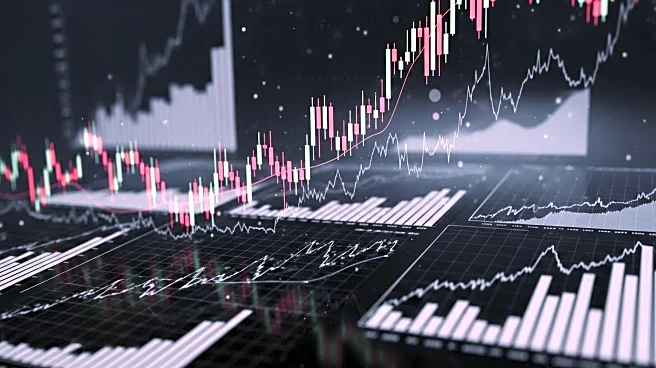What's Happening?
Gold prices have continued to rise, marking a seventh consecutive weekly gain, as the U.S. faces a prolonged government shutdown and anticipates further interest rate cuts. Spot gold increased by 0.1% to $3,861.04 per ounce, following a record high of $3,896.49. U.S. gold futures for December delivery also rose by 0.4% to $3,884.30 per ounce. The ongoing government shutdown, now in its third day, has delayed key economic data releases, including the non-farm payrolls report. Alternate data suggests the U.S. job market remains stagnant, prompting expectations for the Federal Reserve to cut rates further. Investors are pricing in a high probability of rate reductions in October and December. Gold, traditionally a safe haven during political and financial uncertainty, has thrived in the current low-interest-rate environment, rising 47% this year.
Why It's Important?
The rise in gold prices amid the U.S. government shutdown and potential rate cuts highlights the metal's role as a safe store of value during economic uncertainty. The delay in economic data releases due to the shutdown adds to market volatility, influencing investor behavior and financial markets. The Federal Reserve's anticipated rate cuts could further support gold prices, potentially pushing them to breach the $4,000 per ounce mark by year-end. This situation impacts various stakeholders, including investors seeking stability, policymakers managing economic strategies, and industries reliant on gold. The broader economic implications include shifts in investment strategies and potential impacts on currency values.
What's Next?
As the government shutdown continues, the release of key economic data remains uncertain, potentially affecting market dynamics and investor confidence. The Federal Reserve's decisions on interest rate cuts will be closely monitored, with significant implications for gold prices and broader economic conditions. Stakeholders, including investors, policymakers, and industries, will need to adapt to the evolving economic landscape. The potential breach of the $4,000 per ounce mark for gold could trigger further investment shifts and strategic adjustments in financial markets.
Beyond the Headlines
The current situation underscores the interconnectedness of political events and financial markets, highlighting the importance of stability and transparency in government operations. The reliance on gold as a safe haven during uncertainty reflects broader concerns about economic resilience and the effectiveness of monetary policy. Long-term implications may include shifts in investment strategies, increased focus on alternative assets, and discussions on the role of government in economic stability.










